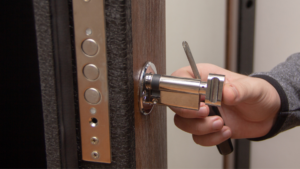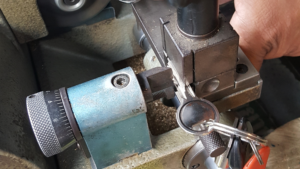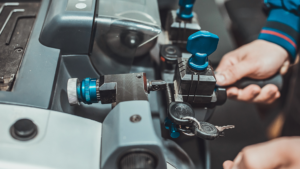When it comes to securing your home or business, door locks are your first point of protection. But what happens when your dependable lock breaks or becomes jammed, leaving you in a tricky situation? Locksmiths are the experts to turn to in such circumstances. In this thorough guide, we will explore locksmith tips for managing broken or obstructed door locks, enabling you to regain access to your property swiftly and efficiently.
Fathoming the Predicament: Broken and Trapped Door Locks
Before embarking on advice for managing broken or jammed door locks, it’s crucial to fathom the nature of the problem. Broken locks can arise from various sources, including the regular wear and tear, physical damage, or even attempted break-ins. On the other hand, jammed locks might be attributed to dirt, debris, rust, or issues with the locking mechanism itself. Identifying the root cause of the issue is the first step in finding an efficient resolution.
Tip #1: Check the Degree of the Predicament
When dealing with a broken or stuck door lock, locksmiths recommend as their initial tip to assess the seriousness of the issue. Is the lock entirely non-operational, or does it still function partially? Understanding the scope of the damage will assist you in determining the best course of action. In some cases, minor obstructions can be resolved by applying lubrication, while significantly damaged locks may necessitate replacement.
Tip #2: Maintenance and Lubrication Essentials
In the case of jammed locks, particularly those plagued by rust or debris, precise lubrication can have a transformative effect. Locksmiths often advocate for the use of a silicone-based or graphite lubricant, as these options do not have a propensity to draw in dirt and debris. Apply the lubricant with restraint to the keyhole and endeavor to gently turn the key to facilitate its entry into the lock. This approach can effectively unjam a lock and reinstate its functionality.
Tip #3: Survey the Key
On occasion, the problem with a door lock doesn’t lie with the lock itself but with the key. Thoroughly scrutinize the key for any indications of damage or bending. A key in poor condition can hinder the proper functioning of the lock. Should you detect any problems with the key, it’s recommended to either have a duplicate created or replace it.
Tip #4: The Importance of Professional Aid
Dealing with damaged locks, especially those that are beyond repair, requires the expertise of a professional locksmith. Trying to rectify a severely compromised lock without the necessary skills and tools can result in further damage and security risks. Locksmiths possess the knowledge and experience to evaluate the situation and provide appropriate solutions, whether that means repairing or replacing the lock.
Tip #5: Rekey or Replace the Lock as Appropriate
When the lock is irreparable, you may have to contemplate rekeying or replacing it. Rekeying involves changing the internal pins and tumblers of the lock to align with a different key. This can prove to be a practical choice for preserving your existing hardware and bolstering security. However, if the lock sustains severe damage, replacing it with a new one is often the most suitable option. A locksmith can assist you in making the right lock choice customized to your specific needs.
Tip #6: Incorporate Preventative Maintenance into Your Routine
To evade future challenges with your door locks, consider routine preventative maintenance. Lubricate the locks on a regular basis, keep them clean, and ensure the door frame in proximity is in good shape. Take immediate action when problems arise to prevent minor issues from escalating into major security dilemmas.
Tip #7: Strengthen Security with High-Security Locks
When you’ve experienced difficulties with malfunctioning or jammed locks, it could be the ideal time to consider upgrading to high-security locks. High-security locks offer an additional layer of security against unauthorized access and tampering. They are designed to withstand various forms of intrusion and are more robust than standard locks.
Tip #8: Trust in Professionals for Lock Setup
If you choose to replace a broken or jammed lock, it’s vital to have it professionally installed. A locksmith can guarantee that the lock is installed with precision, operates seamlessly, and offers the security level you require. Even the finest lock may not deliver optimal performance if it’s not installed properly.
Tip #9: Spare Keys and How to Connect with Emergency Locksmiths
In a proactive stance, it’s a wise choice to create spare keys and securely store them, perhaps with a trusted neighbor or friend. Additionally, keep the contact information for a reliable emergency locksmith at your disposal. This way, you’ll be prepared to obtain the necessary help swiftly if you encounter a lock-related emergency.
Tip #10: Count on Your Locksmith for Ongoing Security Guidance
Locksmiths provide more than just solutions to immediate lock problems; they’re a valuable source of ongoing security counsel. Engage with a locksmith to explore strategies for boosting your property’s security, which might involve installing deadbolts, keyless entry systems, and security cameras.
Coping with inoperative or obstructed door locks can be an anxiety-inducing experience. Nonetheless, with the appropriate locksmith guidance and the support of a certified locksmith, you can capably address the issue. Ensure you evaluate the gravity of the problem, think about maintenance and lubrication, and reach out to professionals as needed. With conscientious care and the correct security measures in place, your door locks will continue to secure your property and offer you a sense of tranquility.





